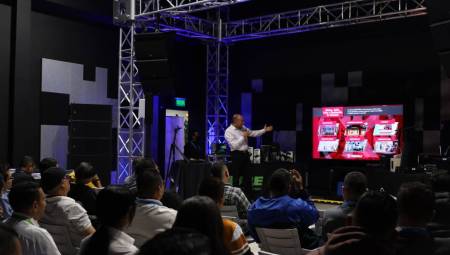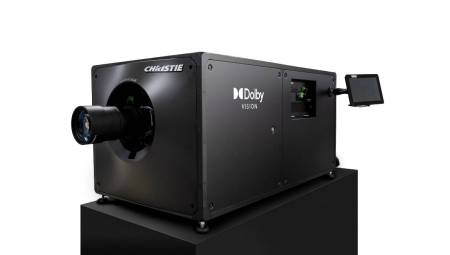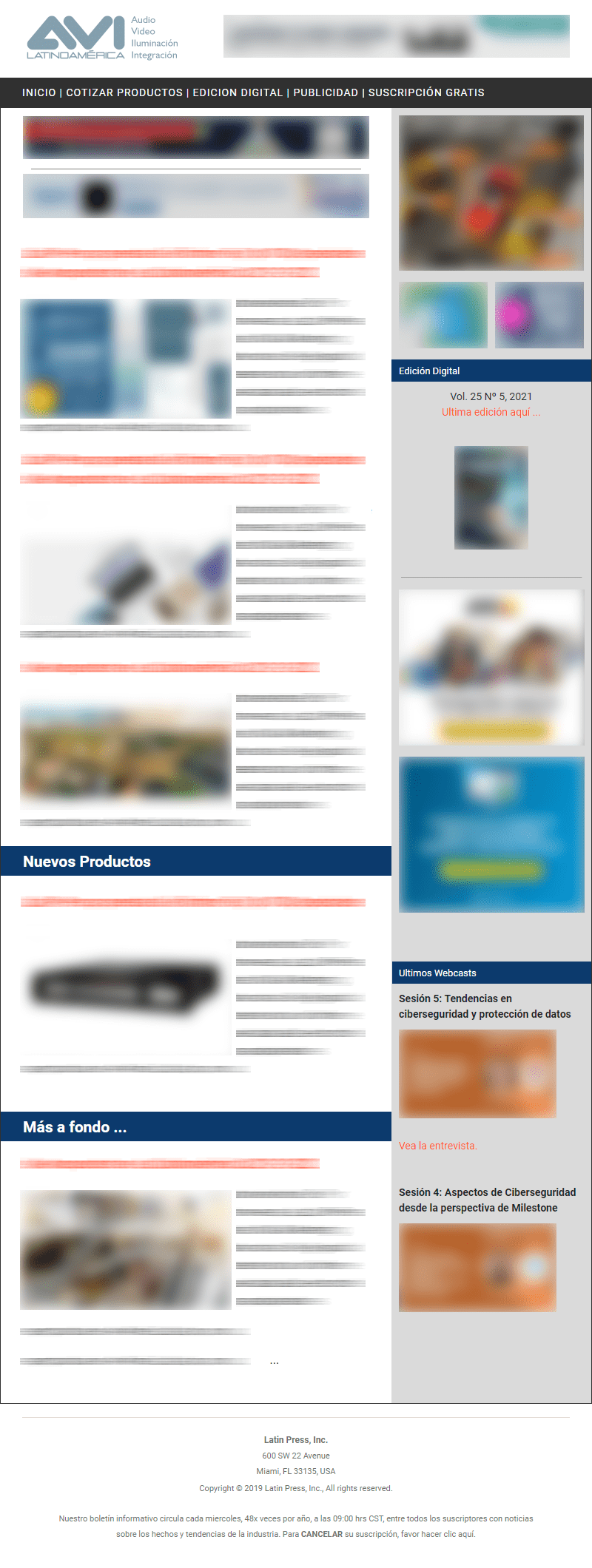In digital systems, equidistant spacing allows microphones to be positioned evenly across the spectrum without worrying about intermodulation.
Juan Moreno*
This article arises from the big question that those of us who work in the world of wireless microphones receive every day: Why should I buy a digital wireless system? What are the main differences between analog systems and new digital systems?
The first thing we must make clear is that the process by which a transmitter and its respective receiver communicate is totally analog regardless of whether its modulation process is digital or as it is currently known (frequency shift modulation or Phase displacement). When we talk about radio frequency, the word digital usually gives us an idea of what the end user would expect: That the noise decreases, less distortion, less interference, better sound or frequency response and greater spectral efficiency or RF stability.
However, and corroborating the above, digitization has the potential to substantially improve audio quality compared to the old compression-expansion technology or also known as Compander resulting in systems with a frequency response of 20hz to 20khz. Systems without data compression can even match the quality of a wired microphone like the Digital 9000 system, the only system on the market without compression. Even so, in most systems audio compression (called codecs) is used, achieving a quality that the old analog microphones could not offer, especially with critical signals such as transients or energy impulses emitted by an instrument which have little duration. (Figure 1)
The quality of the audio transmitted via VHF and UHF is the same. The differences in sound do not depend on the carrier frequency but on the occupied bandwidth and modulation technique. In the 50s FM radio was established in many countries. Since then FM has been used for high-quality audio transmission and since 1958 also for wireless microphones. FM radio and by extension wireless microphones can transmit in a considerable range of frequencies, from subsonic sounds of 3 Hz to ultrasonic sounds of 150 kHz or more, with a dynamic range of up to 130 dB.
With 50 years of evolution, its standard has become extremely high. The digital can surpass the analog in range, sound quality, number of channels or systems simultaneously due to its linearity allowing the spectrum to remain cleaner because they do not generate intermodulations, which are produced by the proximity between two transmitters generating as a result harmonics or amplitudes of unwanted frequencies as shown in the graph on the right. On the other hand, digital systems offer a resistance to interference that analog cannot reach in a real situation, especially when the noise is near or on the same channel. (Figure 2)
The digital transmission should thank the above to the so-called "capture effect", which describes the fact that a noise signal of the same frequency will be inaudible and will not affect as long as the desired RF signal or carrier is much stronger in the receiver. However, due to the signal processing to obtain such audio quality, RF stability and high performance the digital system will introduce some latency into the signal path. For Sennheiser as a manufacturer this is not a problem, since their systems have the lowest latency on the market with 1.9 ms.
Technologies such as EW-D the D6000 digital system or the digital D9000 will provide better system performance, being more linear than those systems of older and analog technology. Turning on transmitters and putting them all together will no longer be a problem, we will be able to occupy 6 MHz spaces with multiple microphones reducing the distance between the carriers without them conflicting and much less without generating intermodulation products due to the proximity between transmitters. We will be able to have during a Show or presentation or conference room, multiple systems and a coordination of frequencies where each of the carriers will have a minimum separation with respect to the others, this is known as equidistant separation.
Graph 3 that we will show below gives us an idea of what a coordination of frequencies with multiple transmitters on would be like which are digital and retain equidistant distances less than 300Khz. The secret is: 1. Do not generate intermodulations 2. The type of modulation used by digital systems is phased, as we explained above.
In analog systems the baseband or audio that enters the transmitter is transmitted as the rate of change of the carrier frequency where the systems by frequency modulation or FM, present in the carrier a deviation or widening which leads to having to occupy more space in configurations with multiple systems without counting that the spectrum will be congested of all those harmonics by the interaction between the transmitters in proximity, effect that is not the same in digital systems because with or without audio the carrier retains its same size.
In conclusion
► In digital systems, equidistant spacing allows microphones to be placed evenly in the spectrum without worrying about intermodulation.
► Digital systems in Sennheiser is synonymous with: greater frequency response and greater dynamic range and better audio quality.
► Standard spacing limits users to banks/channels or requires complex frequency coordination. Otherwise we will run the risk of falls due to intermodulation interference.
► In other systems, when several wireless microphone transmitters get very close, their power can overload each other, this is called intermodulation.
► This generates new frequencies that become interference. 32 very close transmitters can generate more than 15,000 new frequencies that should then be avoided.
► The reason we can avoid intermodulation is because digital transmitters won't overload each other no matter how close you bring them closer. By generating ZERO intermodulation, there are no potential intermodulation frequencies to avoid.
*Juan Moreno is Sennheiser's Business Communications Sales Manager for Colombia, Ecuador and Peru. You can contact him at [email protected]
















